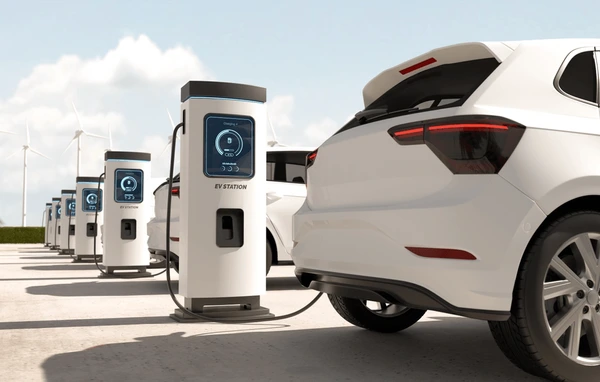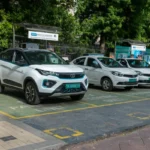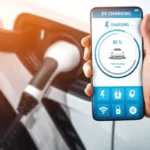The Indian electric vehicle (EV) market is booming, and a major driving force behind this growth is the range of government EV subsidies and incentives offered by the government. In 2025, both central and state policies continue to play a crucial role in making EVs more affordable for individuals and businesses. Programs like the FAME II scheme, GST reductions, income tax benefits, and state-level subsidies are not only reducing upfront costs but also creating long-term savings for EV buyers. For anyone considering switching to an EV in 2025, understanding these government subsidies is essential. In this guide, we will break down every detail of central and state EV subsidies, their eligibility, benefits, and how they impact the overall EV ecosystem in India.
Central Government EV Subsidies in 2025
The central government of India provides subsidies primarily through the FAME II scheme (Faster Adoption and Manufacturing of Hybrid and Electric Vehicles), which has been a game-changer since its launch. As of 2025, the scheme continues to support EV buyers across different vehicle categories.
The FAME II Scheme Explained
The FAME II scheme covers electric two-wheelers, three-wheelers, passenger cars, and buses, offering incentives based on battery capacity. Buyers can receive subsidies ranging from ₹10,000 to ₹20,000 per kWh of battery capacity, depending on the vehicle type. For example, electric scooters receive up to ₹15,000 per kWh with a maximum cap, while electric buses benefit from larger subsidies due to their higher battery capacity. The scheme also supports charging infrastructure development, making government EV subsidies adoption more practical.
State-Level Subsidies and Policies
While central subsidies make EVs affordable nationwide, state governments in India are introducing their own policies to make adoption even more attractive. From road tax waivers to registration fee exemptions, the benefits vary from state to state.
Leading States with EV Incentives in 2025
- Delhi offers purchase incentives for two-wheelers and four-wheelers, along with complete road tax and registration fee exemptions.
- Maharashtra provides subsidies up to ₹1.5 lakh on electric cars, making it one of the most generous states for EV buyers.
- Gujarat focuses on affordable EV ownership with ₹10,000–20,000 subsidies for two-wheelers and up to ₹1.5 lakh for four-wheelers.
- Tamil Nadu promotes EV adoption by offering tax waivers and special benefits for EV manufacturing companies.
These state-level subsidies combined with central incentives can significantly reduce the upfront price of an EV, making them highly competitive compared to petrol or diesel vehicles.
Tax Benefits for EV Buyers in India
In addition to subsidies, EV buyers in 2025 also enjoy tax benefits that ease the financial burden.
Income Tax Deductions under Section 80EEB
One of the most significant benefits is the income tax deduction of up to ₹1.5 lakh on interest paid on loans taken to purchase an EV. This provision, available under Section 80EEB of the Income Tax Act, continues to encourage middle-class buyers to finance their EV purchase while saving money on taxes. Coupled with reduced GST on EVs (only 5% compared to 28% on traditional vehicles), the cost savings are substantial.
EV Subsidies for Commercial and Fleet Buyers
The government also prioritizes subsidies for commercial EV adoption, recognizing its role in reducing emissions and promoting shared mobility.
Fleet, Taxi, and Last-Mile Delivery Benefits
Electric three-wheelers, e-rickshaws, and delivery fleets enjoy higher incentives per kWh under FAME II. Ride-hailing companies and logistics operators can significantly cut operational costs with these subsidies. For example, electric cargo three-wheelers receive incentives of up to ₹50,000, making them an affordable alternative for businesses. States like Karnataka and Telangana also provide local incentives for commercial EVs, further strengthening adoption among fleet operators.
The Impact of EV Subsidies on the Indian Market in 2025
Government subsidies are not just reducing costs but also shaping consumer behavior, EV production, and charging ecosystem expansion.
Long-Term Market Growth
Subsidies are encouraging automakers to introduce more budget-friendly EVs while also ensuring that charging networks expand rapidly. With more affordable options across two-wheelers, cars, and buses, EV adoption is becoming mainstream. In 2025, experts predict that EVs could account for nearly 20% of total vehicle sales in India, largely thanks to these subsidies and supportive policies.
Comparison of EV Subsidies Across States
| State | Two-Wheeler Subsidy | Four-Wheeler Subsidy | Road Tax/Registration | Additional Benefits |
|---|---|---|---|---|
| Delhi | Up to ₹30,000 | ₹1.5 lakh | 100% Waived | Scrappage incentives |
| Maharashtra | ₹20,000 | ₹1.5 lakh | 100% Waived | Early-bird benefits |
| Gujarat | ₹20,000 | ₹1.5 lakh | 50–100% Waived | Priority registration |
| Tamil Nadu | Policy-based | Policy-based | Waived | Manufacturing incentives |
Pros and Cons of Government EV Subsidies
Cons
- Subsidy amount varies widely across states, creating confusion among buyers
- Budget allocation limits the number of beneficiaries each year
- Delays in subsidy disbursal may discourage buyers
- Policy changes can impact subsidy availability unexpectedly
Pros
- Significant reduction in EV purchase price
- Encourages adoption of eco-friendly vehicles
- Boosts EV manufacturing and job creation in India
- Expands charging infrastructure and ecosystem support
Conclusion
Government EV subsidies in India 2025 are making electric mobility more affordable, practical, and attractive for both individual and commercial buyers. From the FAME II scheme at the central level to generous state incentives, tax deductions, and GST reductions, the benefits are substantial. However, buyers need to stay updated on the latest policies, as subsidy amounts and eligibility vary across states. If you are planning to purchase an EV this year, exploring both central and state benefits will help you maximize savings. The future of mobility in India is electric, and government subsidies are paving the way for a greener tomorrow. Explore more EV insights and check our latest reviews to make informed decisions before your next purchase.



